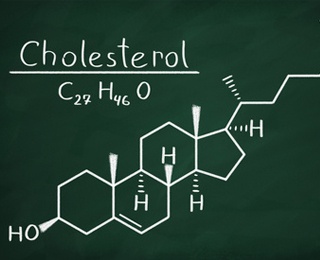Published: March 24, 2016
 At what age should you start having your cholesterol levels tested?
At what age should you start having your cholesterol levels tested?
Well 20 years old might seem too young, but that’s when the American Heart Association recommends screening should begin, even earlier if there are risk factors.
That’s just one of several things you might learn about cholesterol if you take the 15-question quiz compiled by WebMD. And yes, oatmeal and other fiber foods like beans should be part of your diet. (Before taking the quiz, you might want to review these 26 FAQ about cholesterol.)
Lower cholesterol is key to healthy aging, so whether you take the quiz or not, here’s what you need to know.
Good News
High-density lipoprotein or HDL cholesterol is considered “good” because it helps remove the bad cholesterol, LDL, from the arteries. According to the American Heart Association, a healthy level of HDL cholesterol may protect against heart attack and stroke, while low levels of HDL cholesterol have been shown to increase the risk of heart disease.
And there’s more good news, because in many ways you can take control of your cholesterol. Making Therapeutic Lifestyle Changes, abbreviated TLC, can lower your cholesterol and greatly decrease your need to take drugs.
The three components of TLC, according to the National Heart, Lung and Blood Institute, are:
- Eating a low-saturated-fat, low-cholesterol diet. The TLC diet recommends only enough calories to maintain a desirable weight and avoid weight gain. If your LDL is not lowered enough by reducing your saturated fat and cholesterol intakes, the amount of soluble fiber in your diet (such as oats, oranges and carrots) can be increased. Certain food products that contain plant stanols or plant sterols (for example, cholesterol-lowering margarines) can also be added to the TLC diet to boost its LDL-lowering power.
- Maintaining a healthy weight. Losing weight if you are overweight can help lower LDL and is especially important for those with a cluster of risk factors that includes high triglyceride and/or low HDL levels and being overweight with a large waist measurement (more than 40 inches for men and more than 35 inches for women).
- Getting exercise. Regular physical activity (30 minutes on most, if not all, days) is recommended for everyone. It can help raise HDL and lower LDL and is especially important for those with high triglyceride and/or low HDL levels who are overweight with a large waist measurement.
There are 3 risk factors you can’t control, however. High blood cholesterol can run in families, cholesterol levels rise as we get older and women’s bad cholesterol levels tend to increase after menopause.
More Bad News
Your cholesterol may be high, but you are unlikely to have any symptoms or signs of your condition until a serious illness occurs.
That’s why testing is so important, starting at age 20. Experts recommend that you have your cholesterol checked at least every 5 years, more often if you have high cholesterol or are at risk. Ask your physician for guidelines.
So how is cholesterol checked?
The recommended blood test for checking your cholesterol levels, according to the National Institutes of Health, is called a fasting lipoprotein profile.
This blood test will show:
- total cholesterol;
- low-density lipoprotein (LDL), or bad cholesterol -- the main source of cholesterol buildup and blockage in the arteries;
- high-density lipoprotein (HDL), or good cholesterol that helps keep cholesterol from building up in your arteries;
- triglycerides -- another form of fat in your blood.
If you can't have a lipoprotein profile done, a different blood test will tell you your total cholesterol and HDL (good) cholesterol levels. You do not have to fast before this test. If this test shows that your total cholesterol is 200 mg/dL or higher, or that your HDL (good) cholesterol is less than 40 mg/dL, you will need to have a lipoprotein profile.
There are cholesterol home test kits available at your local pharmacy, but their reliability varies and results can fluctuate. The FDA does regulate some kits and has compiled an over-the-counter database for cholesterol (and other tests).
The test is not to replace screening by your doctor, but rather to use in between appointments.
Now the Awful
If you have high LDL levels, along with other risk factors, your chances of having a heart attack or developing heart disease greatly increase.
The National Institutes of Health has compiled a 3-step checklist (you will need to know your total cholesterol and your HDL levels) to determine your risk of having a heart attack in the next 10 years. Smoking, diabetes, high blood pressure and family history of early heart disease increase your risk.
So take good care of yourself. Practice TLC, follow your doctor’s recommendations for screening and quit smoking.

Molly Kavanaugh frequently wrote about Kendal at Oberlin for the Cleveland Plain Dealer, where she was a reporter for 16 years.





